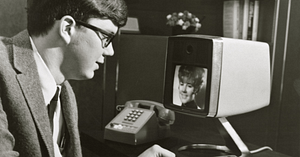
Dear Smartphone: I teach graduate students and now do so over a virtual classroom. Over the summer, one of my students has to finish a paper and then look for a job in this country. He checks in with me once a week. I can’t figure out why he insists on using Zoom video for these meetings instead of a voice call. We are not sharing documents or anything like that. Dieter, Berkeley
Dear Dieter: I believe you have identified a generational trend. Over the past three or four years, live video has grown in use. One data source says one-fourth of young people in the US video chat on a daily basis. During the pandemic it has became even more mainstream.
Your student probably finds a loss of ‘information’ when the visual channel is absent. You, on the other hand, may find it burdensome, or at least cognitively challenging to have both voice and video merged, particularly if the video quality is poor. Younger people seem to be more forgiving of asynchronous talk and fuzzy pictures.
SEE The PICTUREPHONE!
A while back I posted a snapshot of the AT&T picturephone to Instagram. I was surprised how many young people did not know about this invention. They were shocked that it took more than 50 years to become mainstream because it seemed so natural! Picturephone service was costly and the technology was well ahead of its time as the video demands fast data speeds, like 5G. Here is a link to its debut.
Back then, most people never used a Picturephone but it was the butt of jokes about the need to take out the hair curlers, get a shave, etc. Today, we makeup similar stories about having an extra “zoom shirt” on the back of the chair for that impromptu meeting online.
SEE THE CHANGES!
Our devices, and habits, are continually updating. I have an older friend who remembers when her well-to-do grandparents first allowed a phone in their home. The ring-ring was considered to be an interruption, so the butler answered for the householder. A similar protocol evolved in offices, where assistants screened incoming calls. The invention of caller ID and the answering machine minimized their role, and then, mobile phones ushered in the era of text.
If your student wants to use both voice and image, it could be because they have grown accustomed to distance education via Zoom. Or, if they are from overseas, they may be used to calling back home with video through an Internet connection on Facetime or Skype. These platforms work over the Internet and there are no phone charges.
If you don’t want to video with the student, hopefully you will be back in your (IRL) classroom soon.


Leave a Reply
You must be logged in to post a comment.